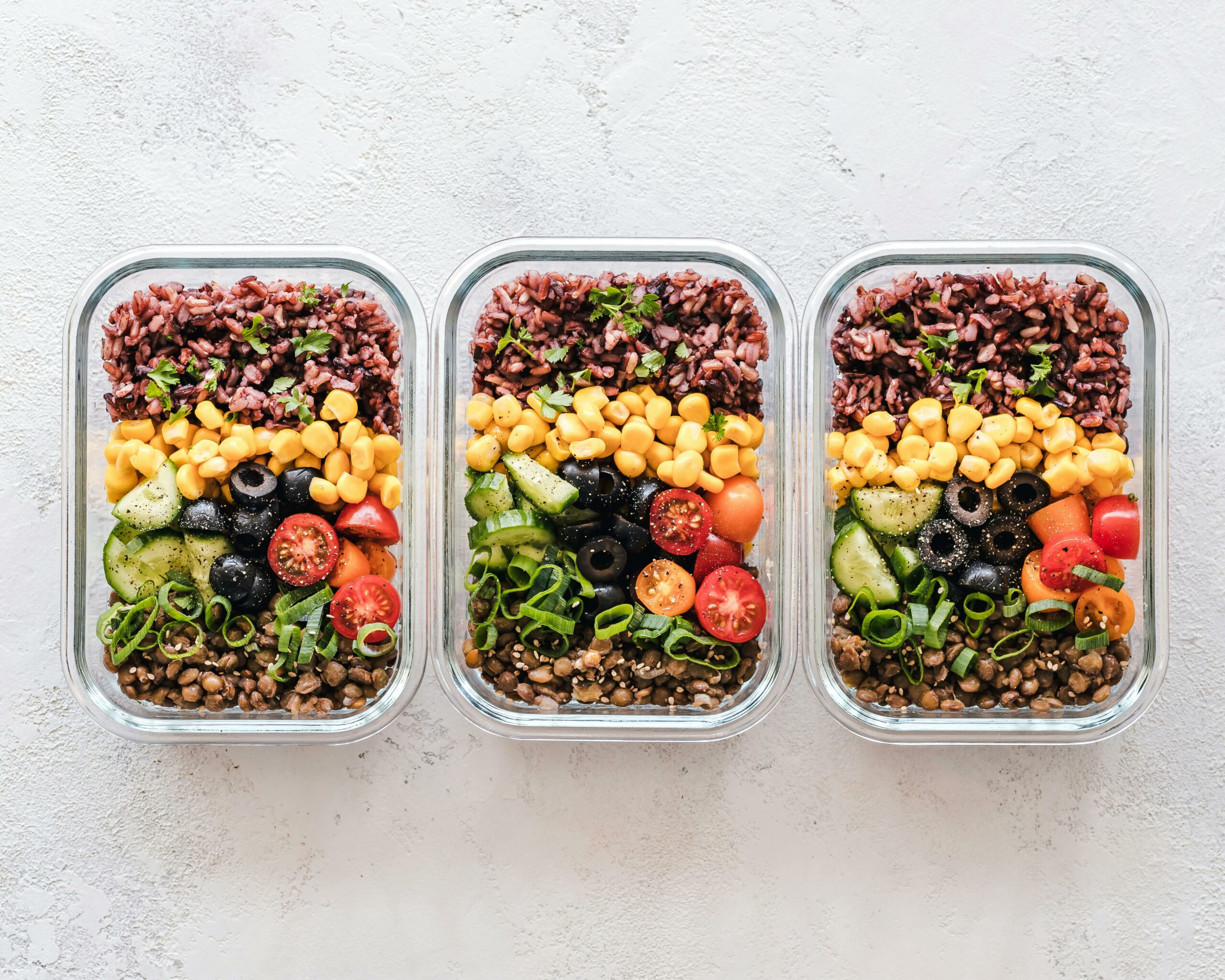We all know the saying: “Abs are made in the kitchen.” But when it comes to fitness, navigating the world of nutrition can feel overwhelming. Crash diets and restrictive plans might get you quick results, but they’re rarely sustainable. The key to achieving your fitness goals and feeling your best is building a balanced and sustainable approach to healthy eating.
Focus on Whole Foods, Not Restrictions
Ditch the fad diets and processed food aisles. Fill your plate with a rainbow of fruits and vegetables, packed with vitamins, minerals, and fiber. Choose lean protein sources like chicken, fish, beans, or lentils to build and repair muscle. Don’t forget healthy fats – avocados, nuts, and olive oil – essential for hormone regulation and satiety.
Fruits & Berries
-
Berries – Rich in antioxidants and fiber, which can help protect against heart disease, and certain cancers, and improve gut health.
-
Bananas – A good source of potassium, which helps regulate blood pressure and muscle function. Bananas are also a natural source of energy.
-
Bell peppers – A good source of vitamin C and antioxidants, bell peppers can boost your immune system and promote healthy skin.
-
Avocados – A healthy fat source, avocados are also rich in fiber, potassium, and vitamins. They can help with weight management, digestion, and heart health.
Whole grains
-
Quinoa – A complete protein source, quinoa is also high in fiber and essential minerals.
-
Oats – Rich in fiber and beta-glucan, which can help lower cholesterol levels, oats are a great breakfast option.
Nuts & Seeds
-
Almonds – A good source of healthy fats, protein, fiber, vitamin E, and magnesium, almonds can help with heart health, blood sugar control, and weight management.
-
Chia seeds: Tiny but mighty, chia seeds are packed with fiber, protein, omega-3 fatty acids, and antioxidants.
Proteins
-
Chicken breast – A low-fat, high-protein source, chicken breast is essential for building and repairing muscle.
-
Beans and lentils – A plant-based source of protein and fiber, beans and lentils are also a good source of folate and iron.
Make Friends with Portion Control
Portion control. Those two words can strike fear into the hearts of even the most enthusiastic healthy eaters. But fret no more! Mastering portion control isn’t about deprivation, it’s about awareness and making informed choices. Here’s how to navigate the world of portion sizes and feel satisfied, healthy, and energized.
Ditch the Confusion on Serving vs. Portion
First, a quick vocab lesson. A “serving size” is the amount listed on a food label. A “portion” is the amount you actually choose to eat. The key is understanding that serving sizes are guidelines, not gospel. Your individual needs may differ based on factors like activity level, age, and sex.
Simple Strategies for Savvy Portions
-
Visual Cues are Your Friends
-
Protein: Palm-sized portions for most adults.
-
Vegetables: Fill a fist-sized space on your plate.
-
Grains: Aim for a half-cup serving, similar to the size of a tennis ball.
-
Healthy Fats: Think thumb-sized for things like nuts and cheese.
-
Embrace the Power of Planning
Planning your meals and snacks sets you up for success. This helps you avoid unhealthy choices when hunger strikes. Batch cook whole grains like quinoa or brown rice for the week, prep your veggies in advance and have healthy snacks readily available.
Meal Planning Tips for Success
-
Involve the Family Get your family involved in the meal planning process. This can help ensure there are meals everyone enjoys and encourages participation in healthy eating.
-
Plan for Leftovers Cook larger portions and enjoy leftovers for lunch or another dinner the next day. This reduces cooking time and minimizes food waste.
-
Be Flexible Life happens! Unexpected events may throw off your plan. Be flexible and adjust your meals accordingly. Don’t let a minor setback derail your entire plan.
-
Make it Fun! Meal planning doesn’t have to be a chore. Experiment with new flavors and cuisines. Cooking can be a creative and rewarding activity.
Don’t Demonize Your Favorites
Let’s face it, healthy eating can sometimes feel like a constant battle against temptation. We crave the comfort of our favorite cookies, the satisfying crunch of fries, or the creamy indulgence of ice cream. But the fear of derailing our progress often leads us to demonize these foods entirely. Here’s the good news: enjoying your favorite foods and maintaining a healthy lifestyle can co-exist!
Instead of constantly battling cravings, schedule occasional “cheat meals” or “treat days.” Knowing you have a planned indulgence on the horizon can help you stay on track with your healthy eating throughout the week. This way, you’ll enjoy your treat more mindfully, without the guilt or fear of derailing your progress entirely.
Life is meant to be enjoyed, and that includes food! Restricting yourself from your favorite treats can lead to cravings and overeating later. Aim for moderation and incorporate occasional indulgences into your plan.
Find Joy in Your Kitchen
Healthy eating doesn’t have to be bland! Experiment with new recipes, explore different cuisines and find healthy ways to prepare your favorite dishes. Cooking at home gives you control over ingredients and portion sizes, plus it can be a fun and rewarding activity.
Repetitive tasks like chopping vegetables or kneading dough can be surprisingly meditative. Focus on the rhythm of your knife hitting the cutting board and the dough’s feel against your hands. Let go of distractions and immerse yourself in the present moment. Cooking can be a form of mindfulness, a welcome escape from the daily grind.
You can also curate a kitchen soundtrack that gets you grooving! Upbeat music can transform mundane tasks into a dance party. Sing along as you stir, shimmy while you sauté – unleash your inner rockstar chef!







